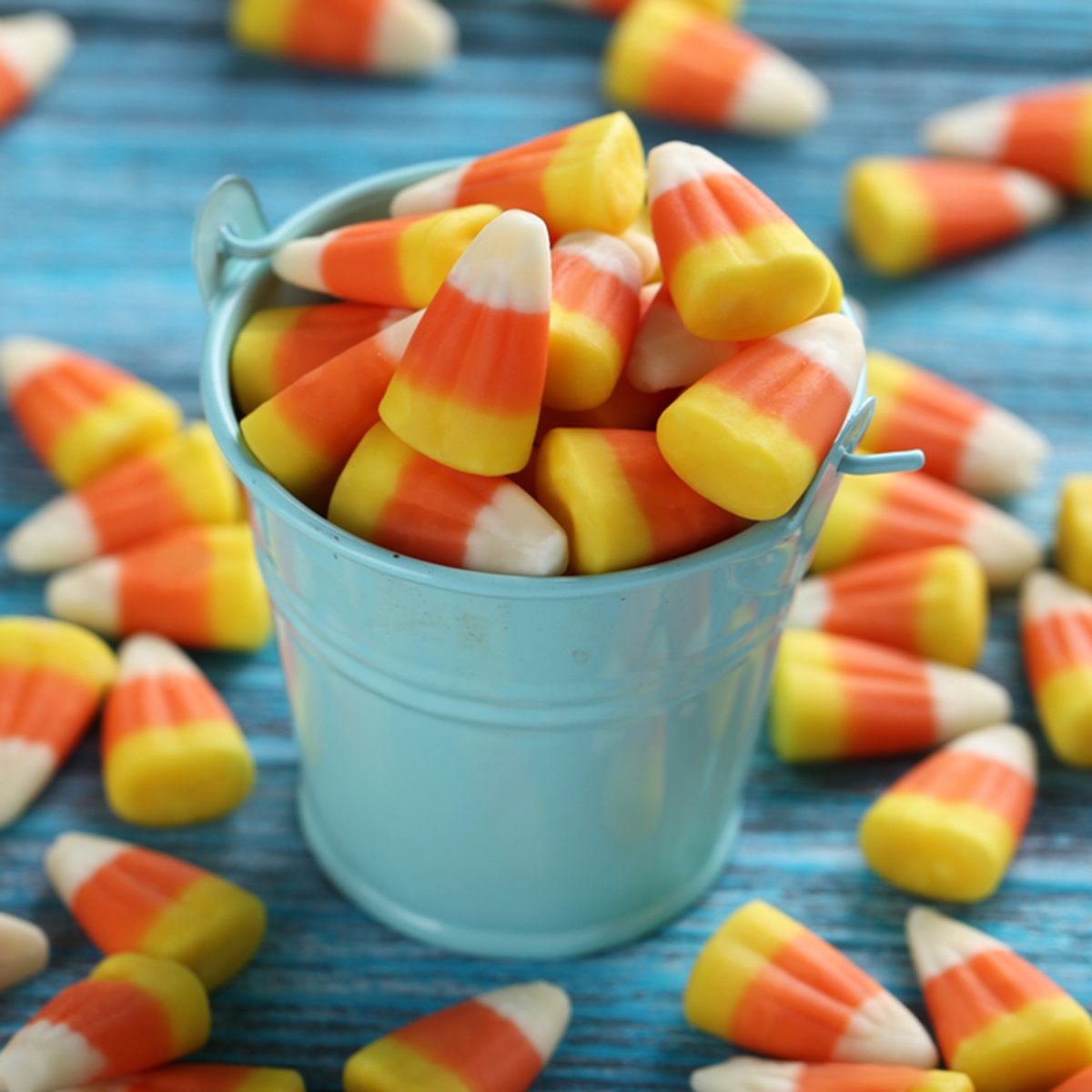
A lot of people hand out Halloween candy
Of the 68 percent of Americans who plan on participating in Halloween in 2019, 69 percent of those will buy candy, according to the National Retail Federation. That’s almost 47 percent of the entire U.S. population filling plastic pumpkins and pillowcases with sugary goodness.

The most popular Halloween candy in America is…
Believe it or not, Skittles! According to September 2019 data from candystore.com, Americans purchase an average of 3.3 million pounds of the chewy rainbow candies every Halloween. They’re also the most popular candy in the most populous state, California. Reese’s peanut butter cups came in a close second with 3 million pounds—and the love of the second-most populous state, Texas. Find out what the most popular candy in your state is.

Halloween candy is expensive
Consumers will spend an average of $2.6 billion on Halloween candy in 2019. Seem like a lot? Well, it’s actually less than they spend on costumes ($3.2 billion) and decorations ($2.7 billion), according to the NRF.

You consume an absurd number of calories
Donna Arnett, head of the department of epidemiology at University of Alabama’s Birmingham School of Public Health, estimates the average American kid eats anywhere between 3,500 and 7,000 calories. That max is the same caloric intake as 13 Big Macs. Arnett says kids who eat that much would need to walk for 44 hours or play basketball for 14.5 hours to burn off all those calories.

Candy corn used to have a different name
One of the most famous (and hated!) Halloween candies, candy corn was invented in late 1880s by George Renninger. His employer, Wunderlee Candy Company, began mass-producing the sweet in the early 1900s, originally calling it Chicken Feed. Its characteristic white, orange, and yellow stripes are supposed to resemble a corn kernel. Fun fact: October 30 is National Candy Corn Day. Learn more about candy corn here.

Too much candy can mess with your head
In an animal study, University of California-Los Angeles researchers found that fructose—a key ingredient of sugar and high fructose corn syrup, found in almost all Halloween candy—can interfere with communication between neurons and affect memory after an injury. Tests conducted by scientists at the University of Montreal and Boston College showed consuming too much glucose, another form of sugar, could result in memory and cognitive deficiencies.

Not all candy used to come in “fun size”
The candy manufacturer Mars started distributing mini candy bars in 1961, specifically targeting trick-or-treaters. They coined the phrase “fun size” in 1968. The first fun size candies were Snickers and Milky Way. When the Curtiss Candy Co. began making fun size Baby Ruth and Butterfinger bars, Mars sued and lost. Now every candy can join in the fun (size).

Tootsie rolls were used in battle
Tootsie Rolls were included in soldiers field rations during World War II to give American troops quick energy. They could also hold up under changing weather conditions. In 1950, U.S. and United Nations troops in Korea put out a call for Tootsie Rolls, a code name for mortar shells. When they opened the airdropped box, they discovered they were actually sent Tootsie Roll candies. Luckily, they turned out to be pretty useful. Because of its malleable consistency, they used it to patch up holes in vehicles and equipment. And, it was one of few foods soldiers could easily eat in cold temperatures.

Japan sells crazy Kit Kats
Kit Kat bars were introduced in Japan in 2000, and now more than 350 flavors of Kit Kats are sold there. While some flavors seem relatively normal—coconut, cheesecake and strawberry—some are much more eccentric, like wasabi, purple sweet potato, butter, and chili. There was also a limited edition “sublime gold” bar. It was a single dark chocolate stick with gold leaf coating. It cost 2,016 yen—around $16.

You can freeze leftover chocolate
Chocolate is good for six to eight months past its expiration date if it’s kept in a freezer. So you can have leftover Halloween candy all year long! Just make sure it’s tightly sealed. Here are more clever ways to use all that leftover Halloween candy.

These Halloween candies no longer exist
Notable discontinued Halloween treats include Brach’s Dem Bones, Chicken Dinner Candy Bar, Hershey’s S’mores, Cookies-n-Cream Twix, Astro Pops, Nestle Wonder Balls, and almond and dark chocolate M&Ms. We think some of them are definitely vintage candies that deserve a comeback, but for others—like candy cigarettes—it’s probably for the best.
The post 11 Awesome Things You Didn’t Know About Halloween Candy appeared first on Taste of Home.
Claire Nowak